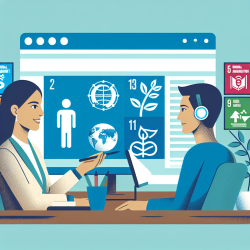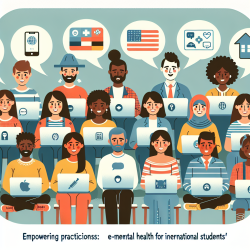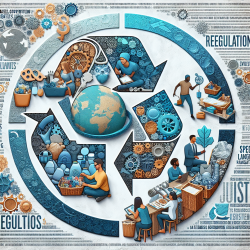Introduction
The COVID-19 pandemic has been a significant disruptor across various facets of life, especially in economically and socially disadvantaged areas. The research article titled "Analysis of the COVID-19 impacts on employment and unemployment across the multi-dimensional social disadvantaged areas" by Anzhelika Antipova provides a detailed exploration of how the pandemic has exacerbated existing inequalities. This blog aims to help practitioners understand the implications of this research and how they can apply these insights to improve outcomes in their communities.
Understanding the Impact
The study highlights that marginalized regions, often burdened with pre-existing social disadvantages, have experienced disproportionate economic impacts due to the pandemic. These areas, termed "multi-dimensional social disadvantaged areas," face higher unemployment rates and fewer employment opportunities compared to more privileged regions.
Key findings from the research include:
- Both urban and rural areas are vulnerable to the pandemic's economic impacts, with marginalized communities facing more significant challenges.
- Social disadvantage is linked to higher unemployment rates and lower employment opportunities during the pandemic.
- The pandemic has intensified existing disparities, creating new forms of inequality.
Practical Applications for Practitioners
Practitioners can leverage these findings to implement strategies that mitigate the pandemic's economic impacts on disadvantaged communities. Here are some actionable steps:
- Identify Vulnerable Areas: Use geospatial analysis to pinpoint communities with high social disadvantage. This can help target interventions more effectively.
- Focus on Employment Opportunities: Collaborate with local businesses and organizations to create job opportunities that match the skill sets of residents in disadvantaged areas.
- Enhance Community Support: Strengthen community-based initiatives that provide essential services, such as food distribution and healthcare access, to mitigate the impacts of unemployment and economic stress.
- Advocate for Policy Changes: Work with policymakers to address systemic issues that contribute to social disadvantage, such as healthcare access, education, and economic opportunities.
Encouraging Further Research
The study by Antipova underscores the need for continued research into the socio-economic impacts of COVID-19, particularly in marginalized communities. Practitioners are encouraged to engage in further research to explore innovative solutions and strategies that can enhance resilience and recovery in these areas.
Conclusion
By understanding and applying the insights from this research, practitioners can play a crucial role in mitigating the pandemic's adverse effects on disadvantaged communities. Collaborative efforts, targeted interventions, and policy advocacy are essential to creating equitable economic recovery and reducing the burdens of social disadvantage.
To read the original research paper, please follow this link: Analysis of the COVID-19 impacts on employment and unemployment across the multi-dimensional social disadvantaged areas.










